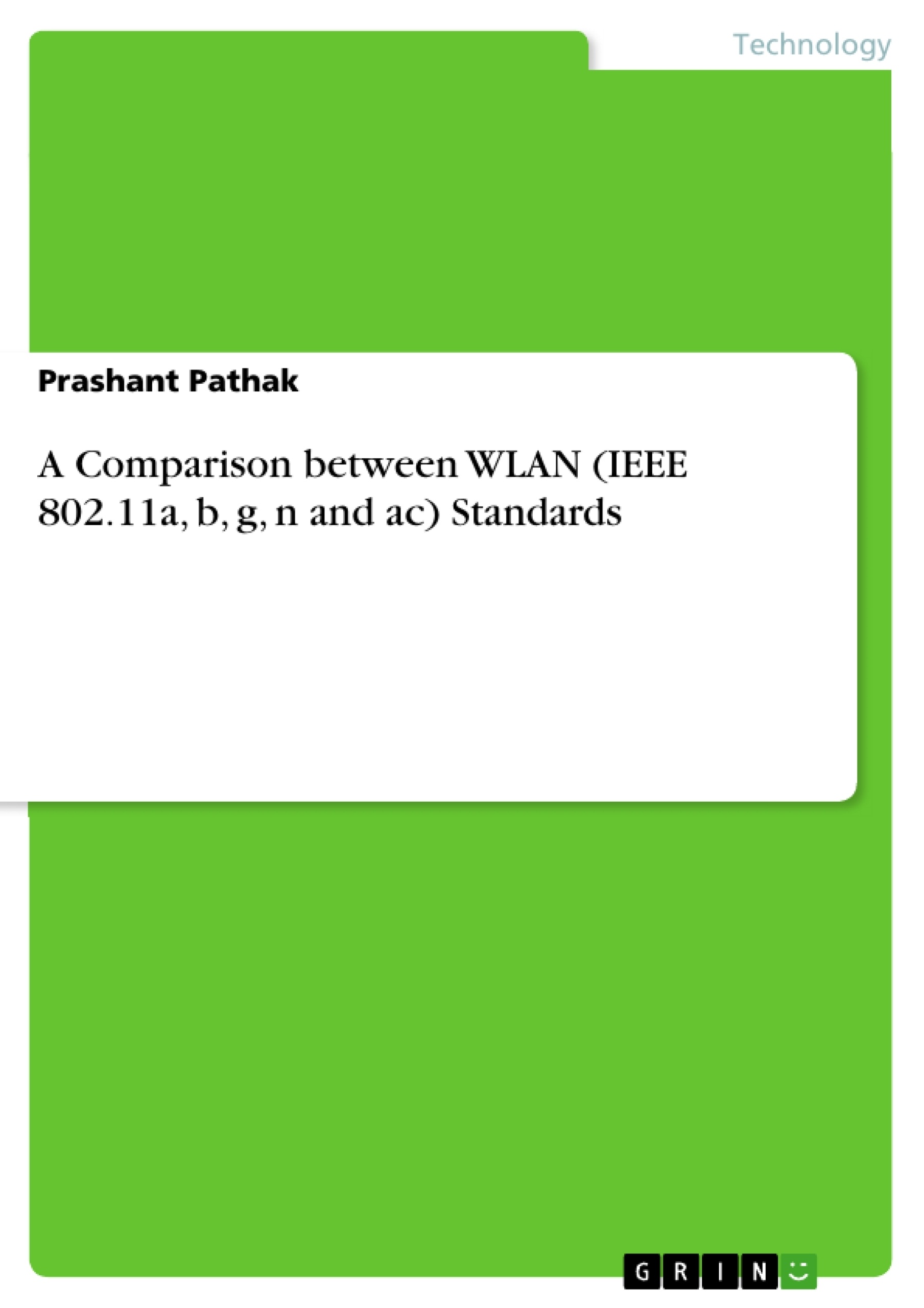Recent advances in the internet and connectivity have confident the society and definition of at variance IEEE 802.11 chain of standards, one as IEEE802.11a, b, g, n, and ac. Each of the standards is equipped by all of capabilities and features that suit the type of applications the human is directed for. This paper provides a comparative study on these standards from the aspects of introduction, evolution, implementation, engaged conditions, and forever and a day of the IEEE 802.11a, b, g, n, and ac standards. This study besides provide a subject of benefits and limitations of these standards.
Table of Contents
- INTRODUCTION
- II. Details of IEEE 802.11 Various Standards
- (1) IEEE802.11a
- (2) IEEE802.11b
- (3) IEEE 802.11g
- (4) IEEE 802.11n
- (5) IEEE 802.11n
- (6) IEEE 802.11ac
- (A) Features of IEEE 802.11ac
- (a) Beam forming:
- (b) Modulation:
- (c) MU-Mimo
- (d) 80 MHz Bandwidth
- (e) 256 Qam
- (B) Wireless Product in the market
- (A) Features of IEEE 802.11ac
Objectives and Key Themes
This paper presents a comprehensive comparison of various IEEE 802.11 standards for wireless local area networks (WLAN). It examines the evolution, implementation, and characteristics of IEEE 802.11a, b, g, n, and ac standards, highlighting their benefits and limitations. The objective is to provide a clear understanding of these standards and their suitability for different applications.
- Evolution of IEEE 802.11 standards
- Technical specifications and capabilities of each standard
- Comparison of data transfer rates, frequency bands, and other characteristics
- Benefits and limitations of each standard
- Real-world applications and deployment considerations
Chapter Summaries
The paper begins with an introduction to the need for wireless broadband advancements and the significance of the IEEE 802.11 standard. It then delves into the details of each standard, starting with IEEE 802.11a and its introduction of OFDM technology. This section also discusses the implementation of IEEE 802.11b, which expanded the standard using DHSS and CCK modulation. The paper then examines the benefits and limitations of IEEE 802.11g, a backward compatible standard that utilizes the same frequency band as IEEE 802.11b. The discussion proceeds to cover IEEE 802.11n, which introduced MIMO technology to enhance data transfer rates and range. Finally, the paper examines the advancements of IEEE 802.11ac, including beam forming, enhanced modulation, and MU-MIMO capabilities. The paper also includes a section highlighting the features of IEEE 802.11ac, such as beam forming and modulation techniques.
Keywords
The paper focuses on the key concepts of IEEE 802.11 standards, wireless networking, communications, Wi-Fi, and LAN. It delves into the technical aspects of OFDM, DHSS, CCK, MIMO, and MU-MIMO technologies, examining their impact on data transfer rates, range, and network performance. The paper also touches upon frequency bands, spectrum utilization, and practical considerations for deploying these technologies in real-world scenarios.
- Citation du texte
- Prashant Pathak (Auteur), 2017, A Comparison between WLAN (IEEE 802.11a, b, g, n and ac) Standards, Munich, GRIN Verlag, https://www.grin.com/document/368284




